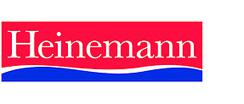- View more resources from this publisher
 Association for Science Education (ASE)
Association for Science Education (ASE)
Better Science 2: Choosing Content
Choosing Content was the second in a series of 12 booklets published by Heinemann and the Association for Science Education to explore the issues arising from moving towards a broad and balanced science education for all young people. The main purposes of this booklet were:
• to consider what content is
• to explore how the content of school science might be chosen
• to argue for a reduction in traditional curriculum content
• to suggest major topics for science
• to illustrate aspects of science content through examples
• to consider some of the implications of what we say.
Contents
Introduction
SECTION ONE Setting the scene
*What is content?
*Whose content is it?
*Why reduce content?
*Electricity: an example
*Other messages
SECTION TWO Time for competence
*Time allocation
*Competence: a concern for outcomes
*Relevance and usefulness
*Being competent
*Progression and levels of attainment
*Criteria for selecting content
*Our criteria
*Aims versus criteria
SECTION THREE The content list
*Areas of study
*Processes, skills and attitudes
*Why these items?
*Other lists of content
*Why these processes, skills and attitudes?
SECTION FOUR Examples
*Electricity
*Relationships
SECTION FIVE Implications: final comments
*Resources
*Further study
APPENDIX Part of the work of the work of Humberside group:
*A Coordinated Science Programme
Further reading
References
Show health and safety information
Please be aware that resources have been published on the website in the form that they were originally supplied. This means that procedures reflect general practice and standards applicable at the time resources were produced and cannot be assumed to be acceptable today. Website users are fully responsible for ensuring that any activity, including practical work, which they carry out is in accordance with current regulations related to health and safety and that an appropriate risk assessment has been carried out.





